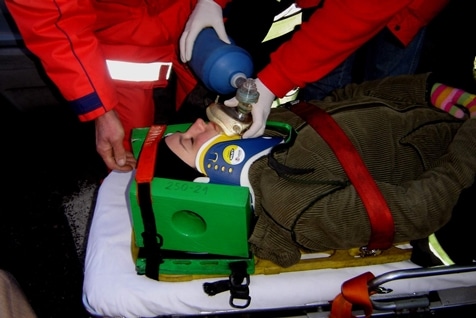The ability to administer effective first aid in the event of a life-threatening injury or sudden illness in the workplace can save lives.
There’s no denying the importance of that. However, for Australian businesses, first aid readiness is also a requirement of the Work Health and Safety Act (WHS Act) and the Work Health and Safety Regulations.
What’s so Important About First Aid?
Providing immediate and effective first aid to workers or others who have been injured or become ill at the workplace may reduce the severity of the injury or illness and promote recovery. In some cases, it could mean the difference between life and death.
A proper and rapid response to non-life-threatening injuries can also directly improve the healing and recovery process. Injured workers who receive effective first aid following an injury may be able to return to work to quicker and with less treatment time and costs.
Many incidents occur in workplaces throughout Australia: every year, 2000 Australian workers die from and 640,000 workers report a work-related injury or illness, costing the economy $60.6 billion.*
First Aid and the WH&S Act
In 2012, Safe Work Australia launched a new harmonised First Aid in the Workplace Code of Practice (the Code). This new Code is designed as a practical guide to assist Australian businesses in achieving compliance with the standards of health, safety and welfare required under the Work Health and Safety Act (WHS Act) and the Work Health and Safety Regulations.
The Code provides a guideline for becoming a first aid ready workplace and is currently being rolled out across the majority of States and Territories.
Rather alarmingly, however, research has shown that only 13% of Australian businesses are first aid ready or compliant with all three core elements of the Code, putting their employees, customers and businesses at risk.
Studies have also identified a concerning lack of knowledge about the Code itself.
What are the Three Core Elements of a First Aid Ready Workplace?
- The presence of accredited first aiders who also undertake annual refresher courses in CPR and renew their qualifications every three years. In low-risk workplaces, one first aider is recommended for every 50 workers. For high-risk workplaces, one first aider is recommended for every 25 workers.
- Workplace resources and equipment, including fully stocked, up-to-date first aid kits, and the presence of clear first aid signage. First aid rooms may also be necessary for some circumstances (e.g. higher risk workplaces, workplaces located far from emergency services).
- Procedures and drills training covering first aid protocols for all workers. All employees should be trained in first aid procedures, including the location and type of first aid kits, communication channels in case of an emergency, and the identity and location of accredited first aiders in the workplace.
First aid readiness offers obvious benefits for both your employees and your business, and it can also benefit your bottom line through reduced claims costs and savings on the indirect costs associated with workplace injuries. Workers are commonly imbued with extra confidence, knowing that their safety and wellbeing is taken care of.
Alsco First Aid can provide best practice solutions for your business to get you first aid ready and compliant. Visit www.alscofirstaid.com.au to discover the services we can provide or call us on 1300 077 391.
Find out more about the First Aid in the Workplace Model Code of Practice: http://www.safeworkaustralia.gov.au/sites/swa/about/publications/pages/first-aid-in-the-workplace
* The Australian Work Health and Safety Strategy 2012-2022, Safe Work Australia.
Image Courtesy: Reytan


LEAVE A REPLY
Your email address will not be published. Required fields are marked *
You must be logged in to post a comment.